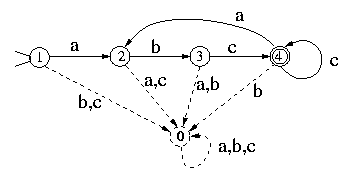

Finite state automata put back free#

Is type safe – you cannot use a state which is not defined in your type.With my approach, you’ve made a finite state machine that: First let me explain how I usually do it: I join states to create a new start state (old start state which is 1 here and the states that I can reach using the ) and then then from this start state I follow what states I can reach following a. “It still looks complicated, man…” Maybe, but again, keep in mind that you could’ve been working on a super serious project for a super serious company where the tiniest bug can cost lots of super-serious money. I want to transform the following NFSA (see image below) into DFSA.
Finite state automata put back how to#
How to use state machines in React? Summary Using the traffic lights example, the situation that traffic light omits the yellow light and changes straight from green to red will never happen (unless you re-define your contract). However, it is more convenient to use integers as state indices for an implementation. For example transducer determinization (Mohri, 1997) uses a set of pairs of states and weights. A finite-state machine (FSM) or finite-state automaton (FSA, plural: automata), finite automaton, or simply a state machine, is a mathematical model of computation.It is an abstract machine that can be in exactly one of a finite number of states at any given time. Other operations dened on weighted nite-state automata use different abstract states. What’s more, by implementing finite state machines you make a contract that a situation NOT described by the machine model won’t happen. put transducers to describe states of the target trans-ducer. It means we’re dealing with a finite state machine here. Plus, traffic lights can only be in a single state at any time.



 0 kommentar(er)
0 kommentar(er)
